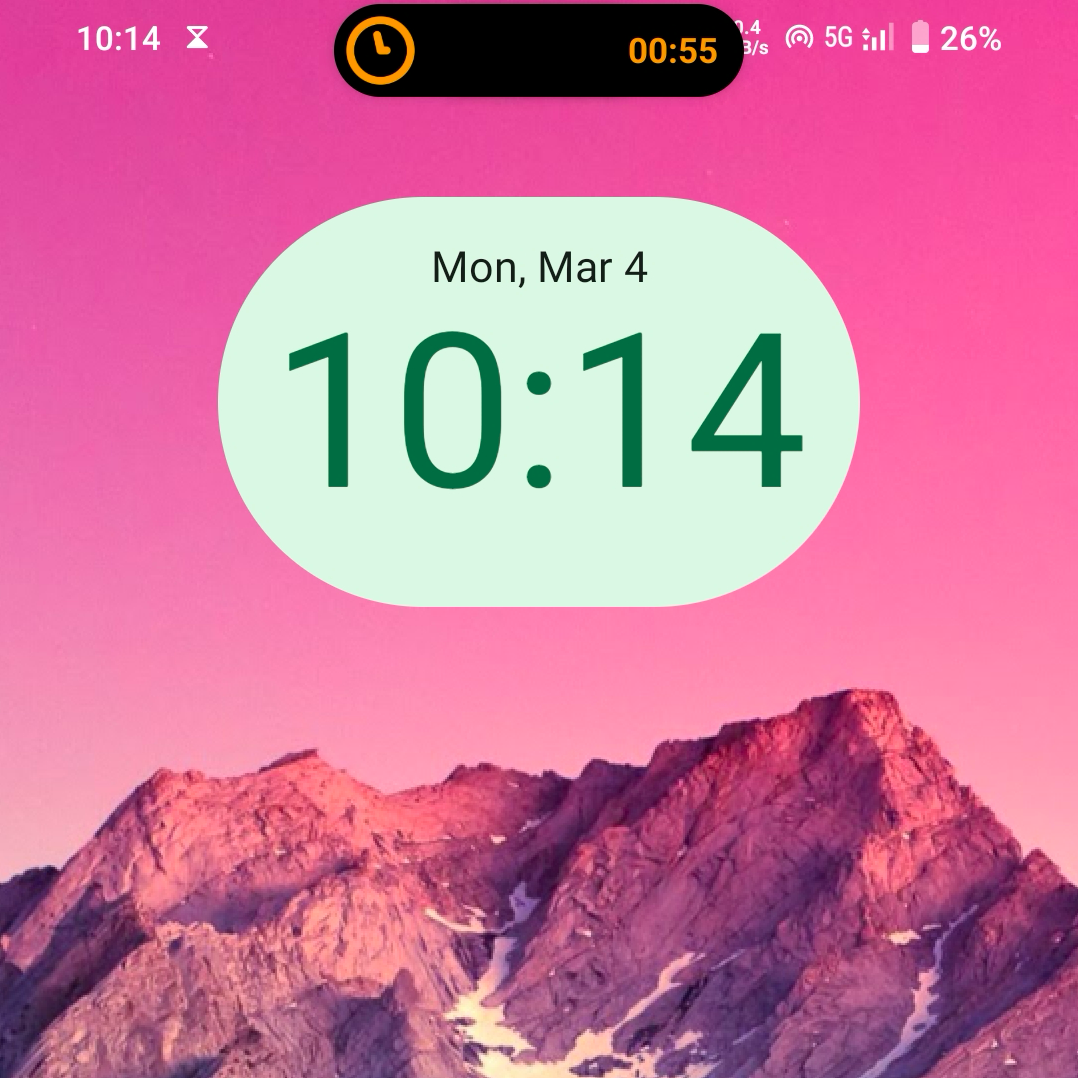Home >Mobile Tutorial >Android Phone >How to Get the iPhone's Dynamic Island on Android
How to Get the iPhone's Dynamic Island on Android
- PHPzOriginal
- 2024-06-18 18:14:32749browse
Have you ever wondered how the iPhone’s Dynamic Island might look on Android? Well, it’s not just a wild fantasy. You can actually bring the free-floating, shape-shifting pill to your Android phone and make it your new notification hub. Sounds cool? Let's dive in.
Why Add the Dynamic Island to Android?
Dynamic Island is a feature that was first available on the iPhone 14 Pro. It was conceived as a clever way to hide the iPhone notch. Apple largely accomplished that goal, turning what was once a distracting dead space into a floating information island. The notch is no longer an outlier; it’s part of the iPhone interface and a new way to glance at important information.
The free-floating pill-shaped notch springs to life when you receive alerts, set a timer, play music, connect your AirPods, or make payments on your iPhone. But you don't need an iPhone to experience the Dynamic Island.
 Dynamic Island on the iPhone 15 Pro Max
Dynamic Island on the iPhone 15 Pro Max I tried out the Dynamic Island on my Android phone through the DynamicSpot app. I was skeptical about the feature being more than a fun gimmick—something you try out once and uninstall a few days later. But having used it for more than a month, I must say it has enriched my phone experience in a delightful way.

I love how the Dynamic Island lets me visualize my notifications and system activities without having to pull down the notification drawer. And it does this in a way that doesn’t come across as jarring or intrusive.
The goal behind bringing the Dynamic Island to Android is not to hide the notch. For Android smartphones, most of which have long switched to the hole-punch cutout, the notch is a non-issue at this point. Rather, it's all about using the shape-shifting pill as a new notification hub for your Android smartphone.
How to Get the Dynamic Island on Your Android Phone
To add the iPhone’s Dynamic Island to your Android phone, you’ll need to download the DynamicSpot app. While the app doesn’t collect or share any personal data, it does require several special permissions to run. We’ll walk you through the setup process and explain what these permissions mean. Let’s get started.
The first step is to download the Dynamic Spot app from the Google Play Store. Once that’s done, open the app. The setup screen will list the permissions and toggles you need to enable. First up, you’ll need to select which apps can access the Dynamic Island popup.

You can manually select your favorite apps or just tap “All” in the upper right corner to enroll your entire app library.

Next on the list is granting the app notification access, so it can, well, read incoming notifications and alerts and display them on the Dynamic Island. No need to get anxious; the app doesn’t collect or store anything. From the app's setup screen, tap "Notification Access." Next, choose "dynamicSpot" under the "Not Allowed" list and turn on the notification access toggle.

Finally, the app requires permission to draw over other apps so it can display the floating popup on any screen. From the setup screen, tap “Draw On Screen” and then click “Next” to open the Accessibility menu. Locate "dynamicSpot" under the "Downloaded Apps" section and set the toggle on.

That's it. The Dynamic Island has been set up, and you’ll start seeing notifications and alerts on a floating pill that automatically expands and retracts from around the hole-punch cutout. But there’s more you can do with the Dynamic Island.
Visualize System Events
You can have the Dynamic Island, as it does on the iPhone, visualize system events and status changes such as phone charging indicator, battery low alert, device unlock confirmation, ringer profile change, etc. To configure these alerts, open the app and navigate to Notifications > System Events.
Get More Out of the Dynamic Island
Here are some recommended configurations to help you get the most out of the Dynamic Island experience:
- Hide the status bar when a system event popup is shown. This adds more immersiveness and prominence to the Dynamic Island pill. Enable this by navigating to General > Hide Statusbar.
- Quickly access your favorite apps by pinning them to the Dynamic Island. To enable this feature, go to General > Show Always (Live Activities).

- Add an animated visualizer for now playing music, audiobooks, and voice recording activity. You can turn this on by navigating to Appearance > Visualizer > High Resolution Visualizer.

- Allow non-removable notifications to use the Dynamic Island. This fixes the issue where timers and recording apps aren’t able to display their activities. Go to "Notifications" and turn off the “Non Removable” toggle.
The free version of DynamicSpot is ad-supported, and you’ll occasionally see full-screen ads when you open the app. You can remove ads and unlock additional perks by paying a small price for the Pro version.
The above is the detailed content of How to Get the iPhone's Dynamic Island on Android. For more information, please follow other related articles on the PHP Chinese website!
Related articles
See more- Video editing tutorial with Screen Recorder_Introduction to Video Editing Master
- How to check the income of Alipay Yu'E Bao?
- How to solve the problem that the font size of Baidu Tieba Android version is too small and enable night mode
- Does Yidui Android version support incognito setting_How to set incognito status
- One-click screenshot tutorial: How to take screenshots of Honor Magic5Pro

